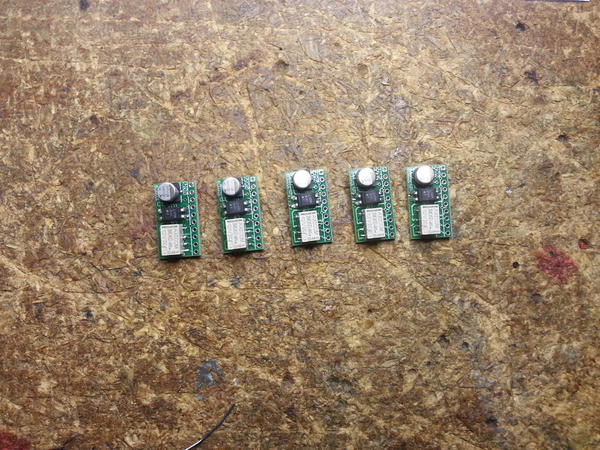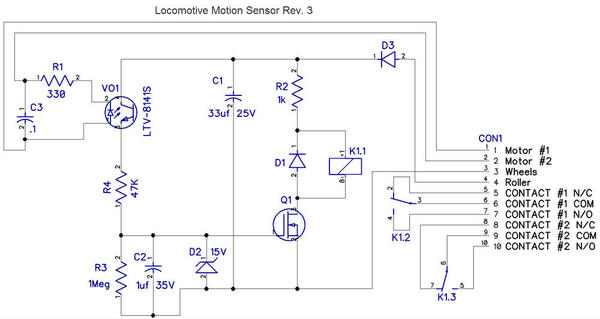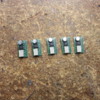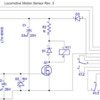Some time back I posted a thread on a circuit to sense when a locomotive is moving or stopped. I wanted to be able to determine this for a variety of reasons, cab light control, Rule-17 lighting, ground light control, and change smoke volume based on whether you're in motion or stopped. I revisited it a few weeks ago, and I have my first prototypes. I'm happy to say it works very well. The new board went into my Amtrak Genesis that I upgraded to TMCC, it give me Rule-17 lighting, cab light control, and smoke volume reduction when stopped. I'm going to add ground lights as well, that's in the queue.
The board is very simple in concept, and it actually works for any command locomotive, all it requires is that there is at least 12-14 volts available to power the circuit. It senses the motor voltage, and whenever the motor has more than about .8-.9 volts across it, the DPDT relay closes. Since it takes more motor voltage than that to get a locomotive moving, it's a pretty effective test. Once you have two sets of contacts indicating if you're moving or stopped, only your imagination limits the uses. ![]()
Here's what the board and circuit look like, the board is only 1/2" x 1", so it should fit almost anywhere.








